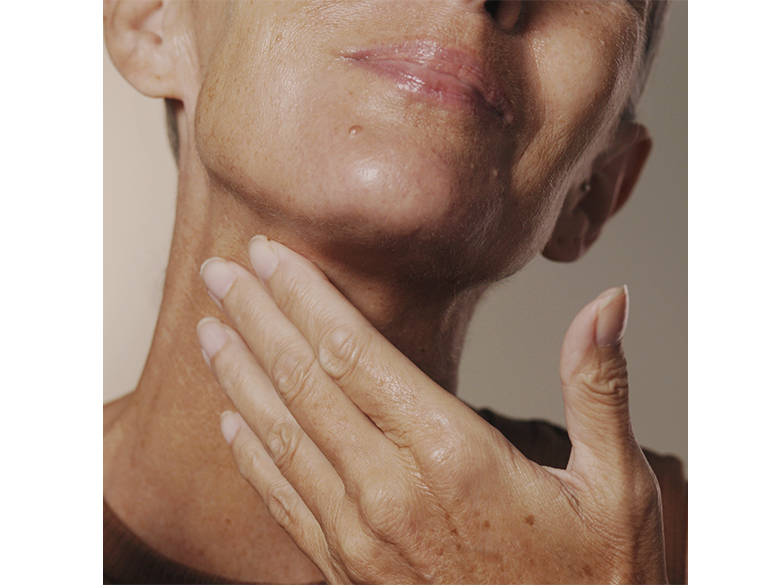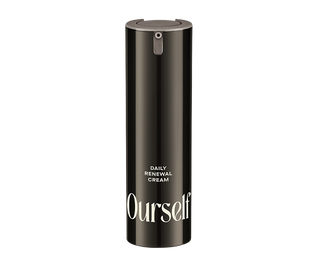
We all have a routine of washing, exfoliating, and moisturizing our bodies. Our facial skincare routines are often a bit more extensive than that.
But what about the in-between space: the forgotten décolleté?
This often overlooked area above the breasts and beneath the neck is one of the most neglected areas of our body. Our décolletés are overexposed to the sun, susceptible to dark spots, and can be one of the biggest giveaways of our true age. You can spend all the money in the world on pricey procedures and world-class skincare, only for your décolleté to detract from it all. Here are a few ways you can take care of your décolleté now and help keep it looking ageless.
Where Exactly Is My Décolleté?
Your décolleté is the skin beneath your neck and above your breasts. Sometimes simply referred to as your “chest,” this area of your cleavage and clavicle is frequently on display during hot summer months.
Even though it’s one of the more prominent features of our body, it is also one of the most frequently neglected. Many of us remember to moisturize our elbows more frequently than we think about hydrating and protecting our décolleté.
When it comes to makeup and skincare, we frequently include our neck region—we apply moisturizer downward and blend foundation into our necks to avoid harsh lines. When we get out of the shower, we put lotion on our bodies to keep our skin from feeling dry and tight. However, the décolleté region could use a little more targeted care.
How Can I Protect My Décolleté From the Sun?
Intentional or not, our décolletés suffer extensive sun exposure every day, especially when driving or simply walking down the street. The basics of suncare can play a huge part in protecting your décolleté.
-
Apply sunscreen every morning before stepping outside, no excuses.
-
Reapply every two hours, whether you are in the water or not (more frequently is better, though). SPF will naturally wear off, especially with sweat, body heat, and other elements present.
-
Don’t fall for SPF gimmicks. Sunscreen bottles labeled as having SPF levels above 50 are technically inaccurate. Dermatologists agree that SPF 50 is just about the highest protection you can obtain.
-
Try to keep this part of your body shielded from the sun. For example, the skin on your décolleté and face is more sensitive and fragile than the skin on your legs. This part of your epidermis is also more susceptible to damage from UV rays, which can lead to sunspots, rough and wrinkly skin, and other signs of aging. In addition to regular sunscreen application, bring a large sun hat along if you know you will be outside for an extended period.
These rules do not only apply to days at the beach, baseball games, or other traditional outdoor activities. If you are going to be outside with your chest exposed at all, wear sunscreen. Most people don’t realize how easy it is to come home with a sunburnt chest after a day of shopping or by sitting on the patio for lunch.
What Are Good Skincare Practices for My Décolleté?
Because this area tends to be more sensitive than the lower part of your body, make it a point to include it in your facial skincare routine.
If you apply any makeup products to your chest, remember to properly remove that product at the end of the day and cleanse it. Exfoliate it a few times a week. Before you put your toner away, grab one more cotton round and treat that area, too. In addition to serums, creams, and oils, try to incorporate a few other hydrating products on your décolleté throughout the week as well. And of course, incorporate our moisturizing creams into your regimen both for the face and below.
Try out a retinoid in the evening, especially if you already have sunspots and rough patches of skin; (just remember to use SPF the next morning). Some retailers also carry hydrating sheet masks specifically meant for your chest.
How Should I Apply Products to My Décolleté?
Instead of smearing serum all over your skin haphazardly, apply it in an upward motion. Over time, small dragging motions can gradually pull your skin down, leading to sagging or wrinkled skin.
Tools like quartz and jade rollers or gua shas can also be used to help support proper lymphatic drainage, blood flow, and removal of toxins. Roll upward on your chest and neck while using gentle pressure to ensure that serums and creams are fully pressed into your skin and not inadvertently absorbed by your fingers.
There are many types of natural stone rollers on the market, but rose quartz and jade are two of the more popular options. Jade rollers tend to be sturdier than rose quartz, but they also warm up once they come in contact with your skin; (something to keep in mind if you plan on freezing or refrigerating yours before use.)
Targeted application of dark spot treatments can reverse hyperpigmentation damage if used consistently. Consider the Dark Spot Treatment Regimen to help treat and protect your décolleté.
The Bottom Line
The décolleté is often forgotten about in the world of skincare, but it’s just as important to take care of the skin in this area as it is to care for your face. Your décolleté is frequently exposed to the sun and other irritants, making it prone to different types of damage and signs of aging. Using SPF to protect your skin from the sun, making sure to moisturize, and applying your products in an upward motion are all effective methods to care of your décolleté.
Sources:

